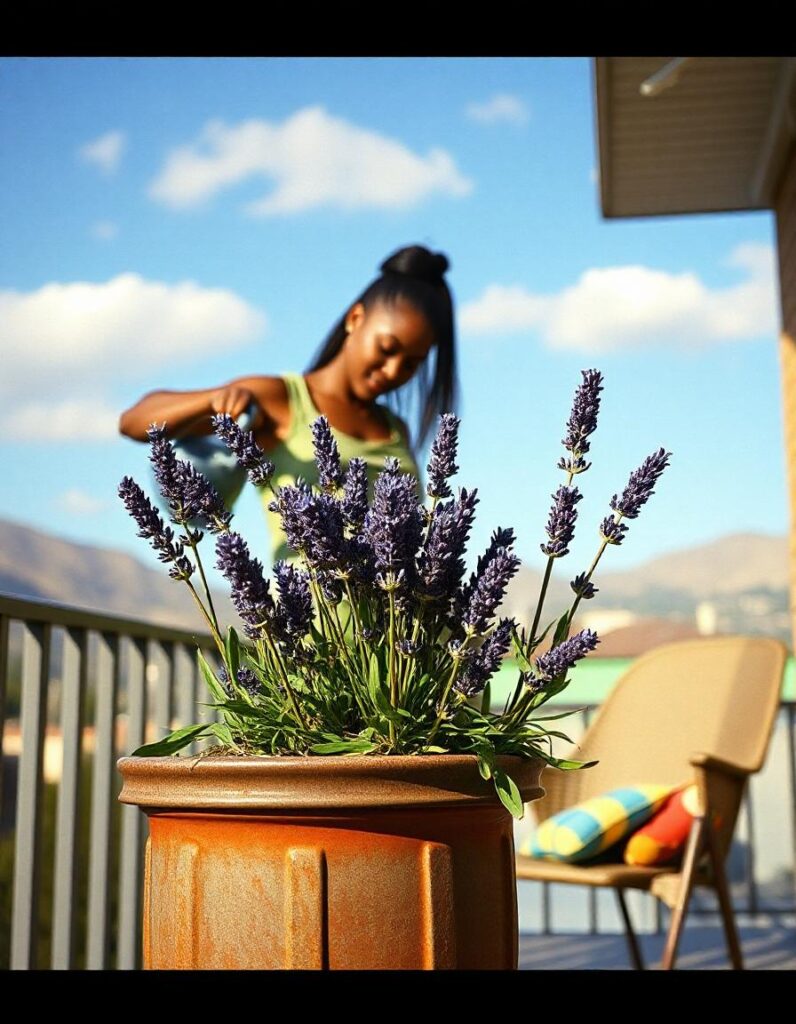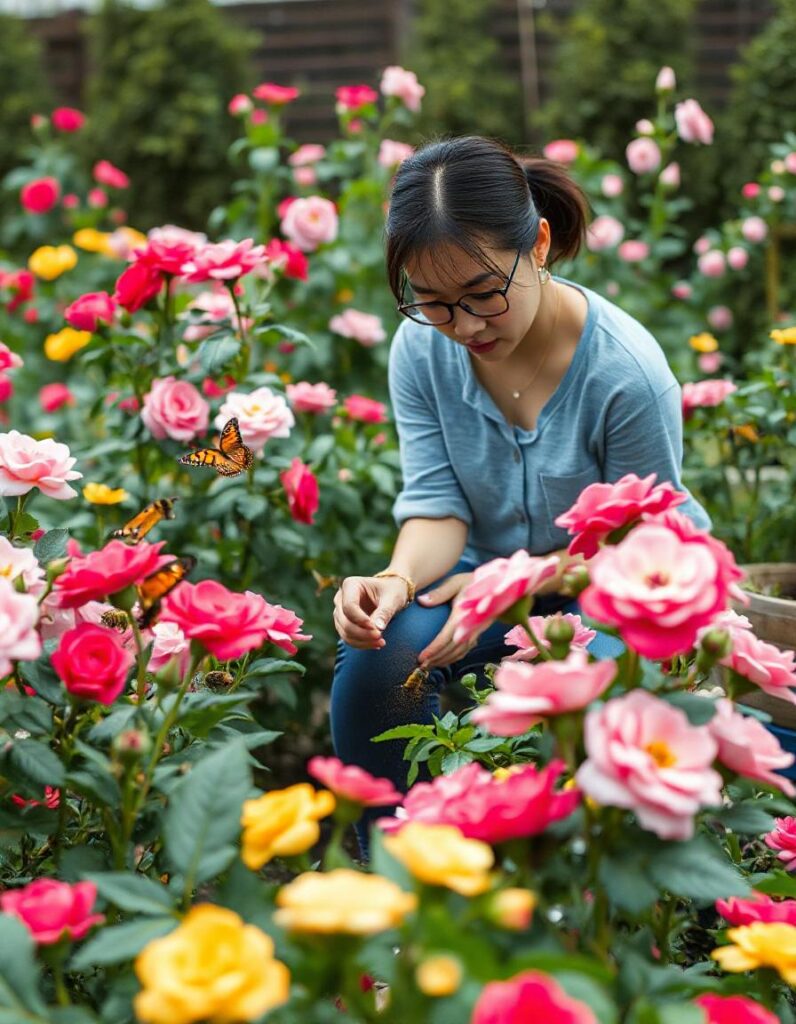A Complete Guide to Growing, Caring, and Using Lavender
Lavender Plant, scientifically known as Lavandula, is a fragrant flowering plant belonging to the mint family, Lamiaceae. Known for its striking purple blooms and soothing aroma, lavender has been cherished for centuries for its medicinal, culinary, and ornamental uses. Native to the Mediterranean region, lavender has found a place in gardens, homes, and products worldwide. This article provides a comprehensive guide to growing, caring for, and using lavender plants.
Table of Contents

1. Types of Lavender
Lavender comes in various species and hybrids, with different characteristics that make them suitable for different climates and purposes. The most common types include:
- English Lavender (Lavandula angustifolia): Known for its sweet fragrance, this type is often used in perfumes, sachets, and culinary dishes. It is hardy in cooler climates and is one of the most popular varieties for gardens.
- French Lavender (Lavandula dentata): Characterized by its serrated leaves and long flowering season, French lavender is less cold-tolerant and is commonly used in ornamental gardening.
- Spanish Lavender (Lavandula stoechas): Recognized by its unique, pineapple-shaped flower heads with showy bracts, Spanish lavender thrives in hot, dry climates and is mainly grown for ornamental purposes.
- Lavandin (Lavandula x intermedia): A hybrid between English and Portuguese lavender, Lavandin is often cultivated for its strong fragrance and large blooms. It is commonly used in commercial production for essential oils.
2. Growing Lavender
Lavender is relatively easy to grow, making it a favorite among gardeners of all skill levels. However, like all plants, it requires specific conditions to thrive.
Ideal Growing Conditions
- Soil: Lavender prefers well-drained, slightly alkaline soil with a pH between 6.7 and 7.3. Sandy or gravelly soils are ideal. If your garden has heavy clay soil, consider amending it with sand or planting lavender in raised beds or pots.
- Sunlight: Lavender thrives in full sunlight. Ensure the plant receives at least 6-8 hours of direct sunlight each day for optimal growth and flowering.
- Watering: Lavender is drought-tolerant once established, but it needs regular watering in its early stages. Water the plant deeply but infrequently, allowing the soil to dry out between waterings. Overwatering can lead to root rot, one of the most common issues for lavender plants.
- Temperature: Lavender prefers warm, dry climates but can tolerate frost in hardier varieties like English lavender. Protecting the plant during extreme winters by mulching around the base can help it survive colder temperatures.
Planting Lavender
- Propagation: Lavender can be propagated from seeds, cuttings, or transplants. While growing lavender from seeds requires patience, cuttings from established plants offer a faster method. Transplants from a garden center are often the easiest way for beginners to start growing lavender.
- Spacing: When planting lavender, space plants about 12-18 inches apart to allow for airflow and reduce the risk of fungal diseases.
- Planting Time: Spring is the best time to plant lavender, after the threat of frost has passed. In warmer climates, fall planting is also an option.
3. Caring for Lavender
Caring for lavender involves regular maintenance to ensure it remains healthy and vibrant. Here are the key aspects of lavender care:
- Pruning: Pruning lavender helps maintain its shape, encourages bushier growth, and prevents the plant from becoming woody. The best time to prune is after the first bloom in early summer. Trim back about one-third of the plant, avoiding cutting into old wood.
- Fertilizing: Lavender doesn’t require heavy fertilization. In fact, too much fertilizer can reduce its fragrance and lead to lush, weak growth. A light application of compost in the spring is usually sufficient.
- Pest and Disease Control: Lavender is generally pest-resistant due to its strong fragrance, but it can still fall victim to fungal diseases like root rot, especially in poorly drained soil. To prevent this, ensure good drainage and avoid overwatering. Occasionally, aphids or spittlebugs may appear, but they can usually be controlled with insecticidal soap or a strong spray of water.
4. Harvesting Lavender
One of the joys of growing lavender is harvesting the flowers, which can be used fresh or dried. Follow these steps for harvesting lavender:
- Timing: The best time to harvest lavender is when about half of the flower buds have opened. This is when the plant’s essential oil content is at its peak, giving you the most fragrant blooms.
- How to Harvest: Use sharp scissors or garden shears to cut the flower stems just above the leaves. Gather the stems into small bundles and hang them upside down in a cool, dark, and dry place to preserve their color and fragrance.
- Drying Lavender: To dry lavender, ensure good air circulation and avoid direct sunlight, which can cause the flowers to fade. Once dried, the flowers can be stored in airtight containers for future use.
5. Uses of Lavender
Lavender is incredibly versatile, with a wide range of uses in aromatherapy, cooking, skincare, and home decor.
- Aromatherapy: Lavender essential oil is renowned for its calming properties and is often used to reduce stress, anxiety, and insomnia. Adding a few drops to a diffuser, bath, or pillow can promote relaxation and better sleep.
- Culinary Uses: English lavender is the best variety for culinary purposes. Its sweet, floral flavor can be used to enhance baked goods, salads, and beverages. Lavender-infused sugar, honey, or syrup are popular ways to incorporate this herb into your cooking.
- Skincare: Lavender is a common ingredient in skincare products due to its anti-inflammatory and antibacterial properties. Lavender oil can soothe skin irritations, reduce acne, and promote healing for minor cuts and burns.
- Home Decor: Dried lavender bundles and sachets can be used to freshen up drawers, closets, or living spaces. Lavender wreaths and arrangements also make beautiful and fragrant decorations.
6. Health Benefits of Lavender
Lavender has been used in traditional medicine for centuries, and modern research continues to uncover its potential health benefits:
- Stress Relief: Lavender’s calming scent has been shown to reduce anxiety, lower heart rate, and improve mood, making it a popular remedy for stress and anxiety.
- Sleep Aid: Lavender is often used as a natural remedy for insomnia. Studies have shown that inhaling lavender essential oil before bed can improve sleep quality and promote relaxation.
- Pain Relief: Lavender oil can be applied topically to relieve headaches, muscle pain, and joint stiffness. Its anti-inflammatory properties make it effective in soothing sore muscles and reducing tension.
- Digestive Aid: Lavender tea is sometimes used to alleviate digestive issues, including bloating, nausea, and indigestion.
Conclusion
Lavender is a beautiful, fragrant plant that offers both aesthetic and practical benefits. Whether you are growing it in your garden, using it in your home, or incorporating it into your wellness routine, lavender’s versatility and charm make it a worthwhile addition to any setting. With proper care and attention, lavender can thrive in a variety of climates and provide a range of uses from aromatherapy to cooking. Embrace the timeless appeal of lavender and enjoy its calming presence in your life.
thank you for visiting our website read more
